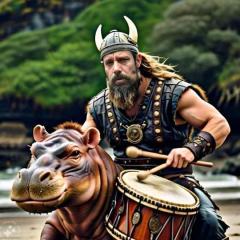IR Thermometers and Emissivity
"Emissivity is the measure of an object's ability to emit infrared energy. Emitted energy indicates the temperature of the object." That definition is from an article on Rayteks website titled Emissivity of Most Common Material. I only recently learned what emissivity meant, and because of that I've been using an infrared (IR) thermometer for over a decade and it seems that only now am I able to use it properly.
IR thermometers measure surface temperature, not air temperature, and so it is important to know both the emissivity value (EV) of the material you are measuring and the emissivity setting (ES) on your IR thermometer. Some IR thermometers have a programmable ES, for instance the Fluke 62 Max, which is adjustable between 0.1 and 1.0. Others have preset ES, usually at 0.95. An EV of 1.0 means the material gives off no radiation, this is known as a "black body". The lower the number the more radiation the material emits, and the materials with EV of 0.99 and below are known as "gray bodies". Wood, for instance, has an EV, depending on species, of between .88 and .96. Polished aluminum, on the other hand, has an EV of 0.04 - 0.05.
To better understand what this means in practical terms I performed a simple experiment. I set my oven to 350ºF. I used a Fluke 62 Max to take measurements at the back wall of the oven after it was preheated. I did this three times for each ES, in increments of 0.1, from 0.9 to 0.2, and averaged the three readings. Below is a graph of the results.

The graph above shows that at the highest ES the readings were quite accurate, and this makes sense because the EV of steel is 0.8-0.9. But by 0.3 the temperature readings were off by almost 400ºF. And at a setting of 0.2 the thermometer was incapable of reading anything because it surpassed the maximum readable temperature of the 62 Max, which is 932ºF, almost 600º higher than the actual temperature.
It's easy to see how using an incorrect setting could give a very inaccurate reading and how important it can be to align your thermometers ES with the actual EV of the material you are measuring. In many cases the default ES of 0.95 will be suitable as most materials appliance techs are working with, plastic and steel, have an EV of between 0.85 and 0.95 anyway, so it will get you pretty close. But other materials we encounter, such as aluminum, brass and copper have much lower EV and an ES of 0.95 will not garner accurate measurements.
Further Reading
- Emissivity Coefficients of Some Common Materials
- The Principles of Noncontact Temperature Measurement (PDF)
Thanks for reading.
David
RD Appliance Service, Corp.
-
.png) 2
2







6 Comments
Recommended Comments